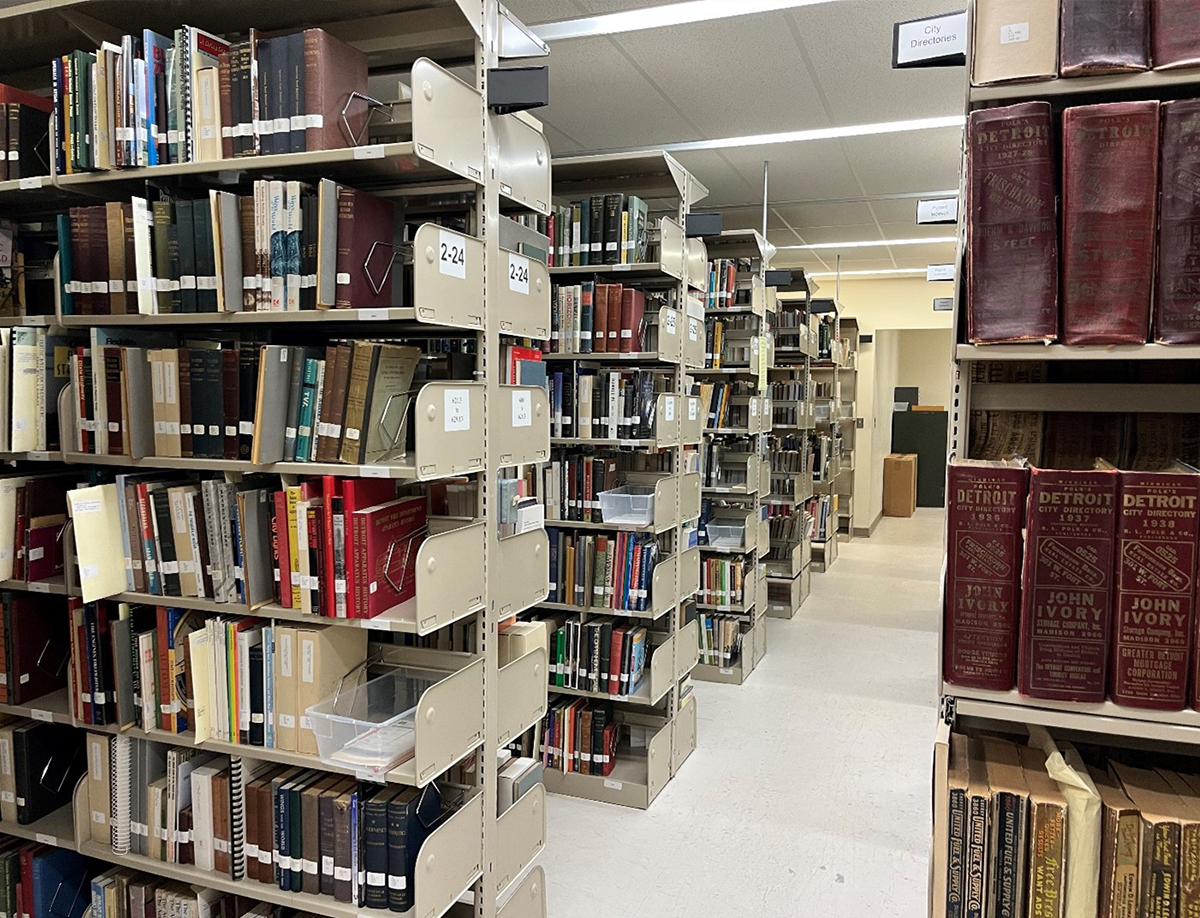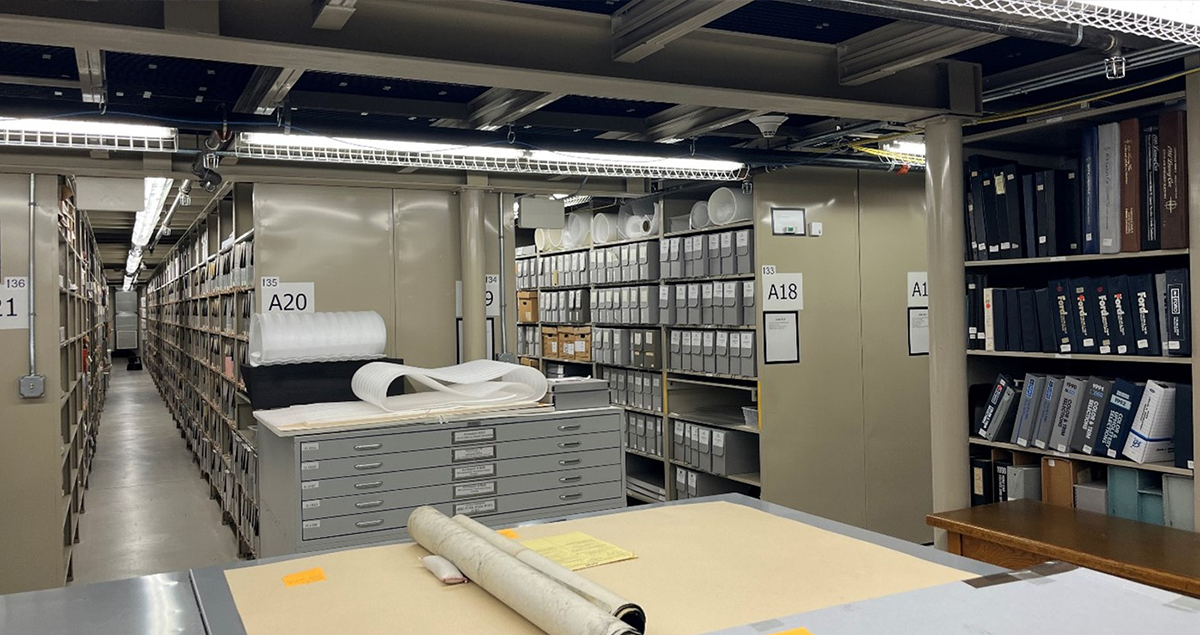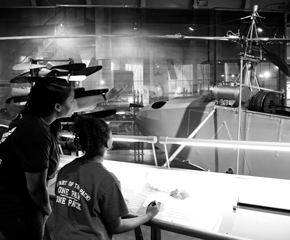Room to Grow: Capacity Studies in The Henry Ford’s Benson Ford Research Center
If you asked someone to picture a library, most would think of their local public library that presents the most recent, riveting, and relevant titles on their shelves. What they might not picture is the library here at The Henry Ford. Located in the Benson Ford Research Center — which you might have seen if you ever visited the Reading Room or parked across the street while in the back of the museum — is the Archives and Library collection at THF. The Henry Ford’s library is a little bit different from a public library because our team adds books to the collection based on their fit with THF’s mission and vision of American innovation!

The library stacks in the Benson Ford Research Center. / Photo by staff of The Henry Ford
One thing that the library collection at THF does have in common with a public library is that our staff are passionate about stewarding these collections for current and future learners. When it became clear that open shelving space for new books was decreasing, the library team decided they needed to act quickly. To begin addressing these space limitations, I joined the Archives and Library team as an intern to conduct a capacity study of the library collection’s storage.
During my internship, I calculated the total amount of space being taken up and the total amount of storage space available, and compared these numbers. Without a standardized system for measuring library storage or for assessing capacity I ran into some difficulties trying to get an accurate view of how full each shelf was. After some trial and error, I eventually adopted a system used by the Archives and Library staff to assess the capacity of the library storage along a scale of 0%, 25%, 50%, 75% to finally, 100%. These somewhat broad values allowed me to assess how full the shelves were, taking specific book storage best practices into account while measuring. As I embarked on this project, I found there were many unlabeled shelves and incomplete floor plans, which complicated how I collected data. After many weeks of measuring the total space available and assessing the capacity of each shelf, I found that the three floors of library storage are just over 70% full!

The archives in Benson Ford Research Center. / Photo by staff of The Henry Ford
Once I determined how much space was being taken up, I then needed to find the best solutions for addressing these all-too-common space constraints. After some research, I found that there were five potential solutions, each with its own level of applicability for the library collection. These solutions included:
- Shifting
- Deaccessioning
- Digitizing
- Installing compact shelving
- Renting off-site storage
Most of these options, despite being a good fit for libraries across the country, were not ideal for us at The Henry Ford. After assessing each solution in a rubric with categories, including collaboration, cost, efficacy, and time, I found that shifting and installing compact shelving were two of the best solutions. While neither of these are an immediate fix, they each provide opportunities to help our Archives and Libraries staff to steward the growing collection for generations of scholars to come!
Julia Noriega was a Ford Foundation Diversity and Inclusion Intern for Archives and Libraries at The Henry Ford


Facebook Comments